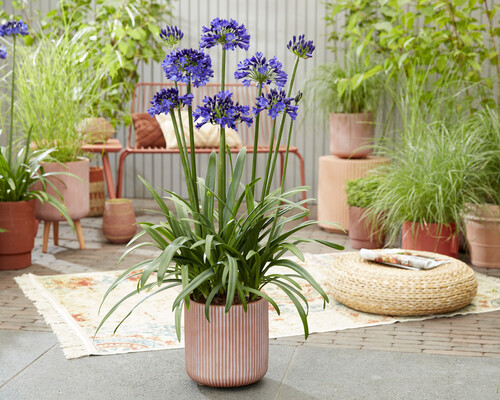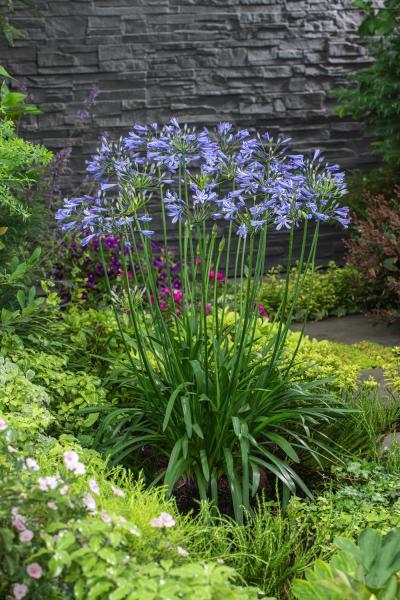Agapanthus Buddy Plants: Perfect Pairings for Your Yard
Agapanthus Buddy Plants: Perfect Pairings for Your Yard
Blog Article
Grasping the Art of Agapanthus Care: Essential Steps for Healthy And Balanced Growth and Lively Blossoms
In the world of gardening, the growing of agapanthus stands as a fulfilling undertaking for those who seek to support these elegant flowering plants. From picking the appropriate selection to grasping trimming strategies, the journey in the direction of growing growing agapanthus plants is diverse and holds the vital to opening the full possibility of these botanical treasures.

Selecting the Right Agapanthus Selection

When choosing the best Agapanthus variety for your garden, consider elements such as environment viability, blossom shade, and growth behavior. Furthermore, think about the climate in your area to guarantee the Agapanthus range you choose can flourish in your particular problems. Comprehending the development routine of various Agapanthus selections is crucial for proper placement within your garden.
Ideal Growing Problems
Taking into consideration the optimum environmental needs is vital for successful Agapanthus growing. Agapanthus plants are sensitive to cold temperature levels and ought to be protected from frost during winter season months.
To make sure healthy and balanced growth and dynamic flowers, plant Agapanthus light bulbs at a depth of concerning 2-4 inches and space them 8-12 inches apart. Including raw material, such as compost, to the soil can enhance water drainage and fertility, promoting durable root growth. Mulching around the base of the plants aids keep wetness and suppresses weed development. Regular watering is essential, specifically during the expanding season, to keep the soil consistently damp but not soaked.
Watering and Fertilizing Tips
Keeping proper dampness degrees and offering essential nutrients are key components in the care routine for Agapanthus plants. When it comes to watering Agapanthus, it is crucial to strike a balance. These plants favor continually moist dirt yet are at risk to root rot if overwatered.
Feeding Agapanthus is crucial for promoting healthy and balanced development and prolific blossoms. Use a balanced fertilizer, such as a 10-10-10 formula, in the early springtime as brand-new growth arises. Repeat this application every 6-8 weeks throughout the expanding season. Stay clear of too much fertilizing, as it can result in lush foliage at the expenditure of blooms. Always comply with the maker's directions for correct dilution and application approaches. By adhering to these watering and feeding ideas, you can ensure your Agapanthus plants prosper and create vibrant, durable flowers.
Trimming Techniques for Agapanthus
Pruning Agapanthus plants at the appropriate times and with appropriate techniques is essential for keeping their wellness and advertising ideal growth and flowering. The optimal time to prune Agapanthus is in late wintertime or very early springtime before brand-new development emerges.
Deadheading spent flowers can likewise redirect the plant's power into producing more blooms rather than setting seeds. If you want to gather seeds for breeding, leave some blossoms to mature and completely dry on the plant.
Remember to make use of tidy, sharp devices to make exact cuts and minimize the danger of introducing diseases. Agapanthus. Normal pruning will assist keep your Agapanthus looking neat and healthy while making sure an abundant display of stunning blooms
Managing Typical Pests and Diseases
After guaranteeing proper pruning strategies for Agapanthus, it is important to address typical insects and diseases that can influence the health and wellness and vitality of these plants. Agapanthus plants are generally sturdy yet can still succumb to particular issues. One usual insect that impacts Agapanthus is the Agapanthus gall midge. This little, orange fly lays find out its eggs in the vegetation, leading to altered read review growth and flower buds that fall short to open up. To combat this insect, prune and ruin any affected plant components and take into consideration using insecticidal soap.
Additionally, Agapanthus plants can endure from root rot if they are planted in improperly draining soil. By being alert and taking prompt activity versus illness and bugs, you can aid your Agapanthus plants grow and produce vivid blooms. Agapanthus.

Final Thought
Finally, understanding the art of agapanthus care includes choosing the appropriate selection, supplying optimal growing problems, appropriate watering and fertilizing, proper trimming strategies, and addressing common parasites and diseases. By complying with these necessary steps, you can make sure healthy and balanced growth and dynamic flowers for your agapanthus plants. Remember to on a regular basis check and preserve your plants to website here promote their overall health and longevity.
To make certain healthy growth and vibrant blossoms, plant Agapanthus bulbs at a depth of concerning 2-4 inches and room them 8-12 inches apart. By following these watering and fertilizing ideas, you can guarantee your Agapanthus plants thrive and create lively, resilient blossoms.
One common pest that influences Agapanthus is the Agapanthus gall midget. Additionally, Agapanthus plants can suffer from origin rot if they are planted in improperly draining soil. By complying with these necessary actions, you can guarantee healthy development and vivid blooms for your agapanthus plants.
Report this page